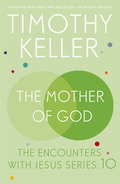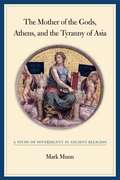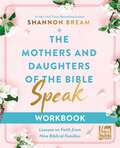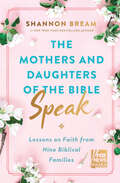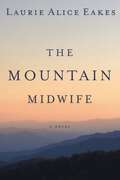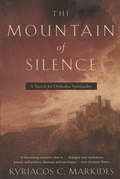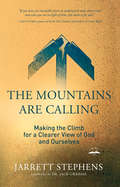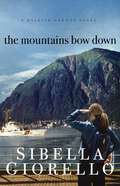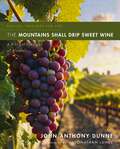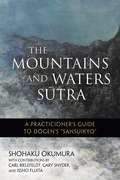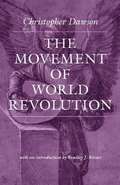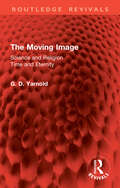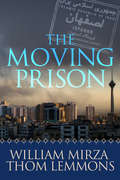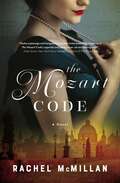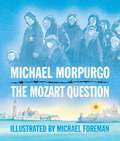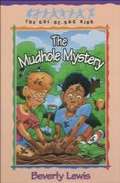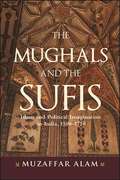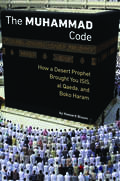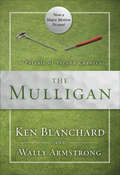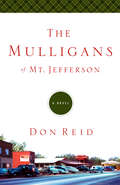- Table View
- List View
The Mother of God: The Encounters with Jesus Series: 10
by Timothy KellerThe announcement of Jesus' birth by the angel to Mary is one of the most rich and beautiful moments in the Gospels. The angel's revelation of Jesus as the long-awaited Messiah is one of the key passages of the Christian faith, and Mary's response to the news has long been held up as an example of robust faith and courage.In The Mother of God, Timothy Keller, pastor of New York's Redeemer Presbyterian Church and New York Times bestselling author of The Reason for God, explains why this encounter is so significant, and draws deep life lessons for all Christians to follow in the example of Mary.
The Mother of the Gods, Athens, and the Tyranny of Asia: A Study of Sovereignty in Ancient Religion
by Mark Henderson MunnThis is a provocative, daring, and ambitious comparison of Greek and Asiatic ideologies from the time of Midas to the Persian empire. Using the Lydian goddess of sovereignty as a touchstone, Munn demonstrates that divinities were not static types, but were expressions of cultural systems, responding to historical change.
The Mothers and Daughters of the Bible Speak Workbook: Lessons on Faith from Nine Biblical Families
by Shannon BreamEXPLORE THE INTIMATE CONNECTION BETWEEN FAITH AND FAMILYGod uses mothers and daughters in critical roles throughout the Old and New Testaments. They are often used to change the course of history, but more importantly, these female relationships and roles reveal a deeper depth of God&’s love for and faithfulness to each of us.This workbook is based on the #1 New York Times bestseller, The Mothers and Daughters of the Bible Speak. In these nine lessons, you will consider the parallels between the relationships, experiences, and challenges of women in the Bible as mothers and daughters and your own. You&’ll reflect on how God focused on their faith and trust—and how He is doing the same with you.Each lesson includes four components:REFLECT invites you to read key moments of each woman&’s life in the Bible and connect with her story.CONNECT asks you to consider how God in the Old Testament or Jesus in the New Testament responds to each woman and what this discloses about His character and how He responds to you.REVEAL provides an opportunity to identify how God works through the woman&’s relationship, responses to God, and acts of faith, as well as your similar relationships, responses, and acts of faith.PRAY asks you to prayerfully consider how the woman&’s story and how her relationship ties into the work God is doing in your life right now.BONUS SECTIONS: MIRACLES where you&’ll be asked to consider the phenomenal eye witness accounts experienced by mothers and daughters and how those incredible events continue to impact your life today.Lessons include:Jochebed and MiriamRuth and NaomiElizabeth and MaryRebekahBathshebaMary, Mother of JesusDinahEstherMichal
The Mothers and Daughters of the Bible Speak: Lessons on Faith from Nine Biblical Families
by Shannon BreamGod always keeps His promises, but not always in the way we expect….“Have faith” is a phrase we hear all the time. But what does it actually look like to live it out? In The Mothers and Daughters of the Bible Speak, Shannon Bream examines the lives of biblical women to see how God’s plans can turn our worlds upside down. She tells the story of Jochebed, a mother who took enormous risks to protect her son, Moses, from Pharaoh. Could Jochebed have imagined that God’s actual design for her son involved flight into exile and danger? And yet this was all part of the master plan to deliver Israel from slavery. Another biblical mother, Rebekah, made terrible choices in an attempt to ensure her son’s place in history. And a daughter, Michal, struggled to keep her faithless father, Saul, from sin, while battling pride in herself.Through these stories, Shannon explains the intimate connection between faith and family—and how God’s unexpected agenda can redefine the way we think about family. Not all of these mothers and daughters in the Bible were paragons of virtue. Like us, they were human beings who faltered and struggled to do their best. While some heard God’s voice, others chose their own paths. Through the lens of their imperfections, we can see how God used their stories to bring about His divine plans. He’s still doing the same work in our lives today.The Mothers and Daughters of the Bible Speak shows that faith is more often a twisting road than a straight line. Yet, as the stories of biblical families attest, at the end of these journeys lies greater peace and joy than we could ever imagine.Supplemental enhancement PDF accompanies the audiobook.
The Mothman Prophecies: A True Story
by John A. KeelThe New York Times bestseller long regarded as a classic in the literature of the unexplained—the basis of the 2002 film starring Richard Gere.“The Mothman remains a potent piece of American folklore.” —CNNWest Virginia, 1966. For thirteen months the town of Point Pleasant is gripped by a real-life nightmare culminating in a tragedy that makes headlines around the world. Strange occurrences and sightings, including a bizarre winged apparition that becomes known as the Mothman, trouble this ordinary American community. Mysterious lights are seen moving across the sky. Domestic animals are found slaughtered and mutilated. And journalist John Keel, arriving to investigate the freakish events, soon finds himself an integral part of an eerie and unfathomable mystery.“An essential read. Even if you just enjoy good suspense, when Keel talks of his own experiences with Men in Black, stolen evidence, and intimidation via eerie phone calls and visitations, you’ll want to keep reading.” —Strange Horizons
The Mountain Family: An Appalachian Family Of 12 -- And Their Fascinating Journey To Judaism
by Tzirel Rus Berger Penina NeimanFrom the Appalachian backwoods comes a family so amazing, a true story so incredible, and a light so bright - it will illuminate our own lives as well. When Sheryl Youngs married John Massey, she looked forward to a life based on the Biblical principles her parents, members of a small but fervently religious congregation, had instilled in her. What she didn't expect was to be making that life in a shack on a mountain in impoverished Appalachia. And she didn't expect that she would end up living on that mountain, homeschooling her ten children. And she most certainly didn't expect that somehow, incredibly, miraculously, she and her entire family would discover the truth of Judaism, the beauty of Torah - and the Jewish People the entire family would ultimately come to join. This is the story of the pastor's daughter who became a Jew, mother of ten Jews, all devoted to Torah learning and mitzvah observance. It is a story of struggle and search, of searing disappointment and unlooked for hopes, of questions asked and prayers answered. Most of all, it is the story, told in her own words, of a woman whose deep love of Torah is an inspiration to us all.
The Mountain Midwife
by Laurie Alice EakesFor nearly two hundred years, women in Ashley Tolliver’s family have practiced the art of midwifery in their mountain community. Now she wants to take her skills a step further, but attending medical school means abandoning those women to whom she has dedicated her life, the mountains she loves, and the awakening of her heart. Ashley Tolliver has tended to the women of her small Appalachian community for years. As their midwife, she thinks she has seen it all. Until a young woman gives birth at Ashley’s home and is abducted just as Ashley tries to take the dangerously bleeding mother to the nearest hospital. Now Ashley is on a mission to find the woman and her newborn baby . . . before it’s too late. Hunter McDermott is on a quest—to track down his birth mother. After receiving more media attention than he could ever want for being in the right place at the right time, he receives a mysterious phone call from a woman claiming to be his mother. Hunter seeks out the aid of the local midwife in the mountain town where the phone call originated—surely she can shed some light on his own family background. Ashley isn’t prepared for the way Hunter’s entrance into her world affects her heart and her future. He reignites dreams of having her own family that she has long put aside in favor of earning her medical degree and being able to do even more for her community. But is it commitment to her calling or fear of the unknown that keeps her feet firmly planted in the Appalachian soil? Or is it something more—fear of her growing feelings for Hunter—that makes her hesitant to explore the world beyond the mountains?
The Mountain of Silence
by Kyriacos C. MarkidesAn acclaimed expert in Christian mysticism travels to a monastery high in the Trodos Mountains of Cyprus and offers a fascinating look at the Greek Orthodox approach to spirituality that will appeal to readers of Carlos Castaneda. In an engaging combination of dialogues, reflections, conversations, history, and travel information, Kyriacos C. Markides continues the exploration of a spiritual tradition and practice little known in the West he began in Riding with the Lion. His earlier book took readers to the isolated peninsula of Mount Athos in northern Greece and into the group of ancient monasteries. There, in what might be called a "Christian Tibet," two thousand monks and hermits practice the spiritual arts to attain a oneness with God. In his new book, Markides follows Father Maximos, one of Mount Athos's monks, to the troubled island of Cyprus. As Father Maximos establishes churches, convents, and monasteries in this deeply divided land, Markides is awakened anew to the magnificent spirituality of the Greek Orthodox Church. Images of the land and the people of Cyprus and details of its tragic history enrich the Mountain of Silence. Like the writings of Castaneda, the book brilliantly evokes the confluence of an inner and outer journey. The depth and richness of its spiritual message echo the thoughts and writings of Saint Francis of Assisi and other great saints of the Church as well. The result is a remarkable work-a moving, profoundly human examination of the role and the power of spirituality in a complex and confusing world.
The Mountains Are Calling: Making the Climb for a Clearer View of God and Ourselves
by Jarrett StephensThe teaching pastor of one of America's largest megachurches gives a call to action: Study the mountains mentioned in Scripture. Learn what God reveals there about himself, and you. Then take those truths back to the people.An overview of the mountaintop experiences mentioned in Scripture where God met with his followers for the express purpose of greater clarity on two questions: Who is God? and Who am I? Each chapter provides the reader with a clear picture of God's character and how those attributes both challenge and encourage us.
The Mountains Bow Down: The Rivers Run Dry, The Clouds Roll Away, The Mountains Bow Down, The Stars Shine Bright (A Raleigh Harmon Novel)
by Sibella GiorelloEverything's going to work out. Time away always makes things better . . .That's what FBI Special Agent Raleigh Harmon believes as she boards a cruise to Alaska. A land of mountains and gems and minerals, the Last Frontier is a dream destination for this forensic geologist who's hoping to leave behind a hectic work schedule and an engagement drained of romance.But when a passenger goes missing and winds up dead, Raleigh's vacation suddenly gets lost at sea. The ship's security chief tries to rule the death a suicide, but Raleigh's forensics background points to a much darker conclusion: Somewhere onboard, a ruthless murderer walks free.Engulfed by one of her toughest cases yet, Raleigh requests assistance from the FBI and receives her nemesis--handsome Special Agent Jack Stephanson. As the cruise ship sails through the Inside Passage, Raleigh has five days to solve a high-profile murder, provide consultation for a movie filming onboard, and figure out her increasingly complicated feelings for Jack--who might not be as arrogant as she originally thought.And that's only her work life. Family offers even more challenges. Joined on the cruise by her mother and aunt, Raleigh watches helplessly as disturbing rifts splinter her family.Like the scenery that surrounds the cruise ship, Raleigh discovers a mystery so daunting that even the mountains might bow down before it.
The Mountains Shall Drip Sweet Wine: A Biblical Theology of Alcohol (Biblical Theology for Life)
by John Anthony DunneWhat does the Bible say about alcohol?Evangelical Christianity has a complicated relationship with alcohol. For years, many believers have welcomed it as a gift from God, while others have rejected it as a definite, Spirit-quenching sin. But what does the Bible actually say about alcohol and its use?Alcohol is a pervasive theme throughout the Bible. In The Mountains Shall Drip Sweet Wine, John Anthony Dunne offers an exhaustive exploration of the references to alcohol and its related imagery within the Old and New Testaments. His biblical-theological approach allows for the nuance of the genres and historical periods of the Bible to shed light on how we are to approach the topic.In his thorough account, Dunne argue that the symbolism of wine and other fermented drinks in the Bible is multifaceted and complex--as a good vintage itself would be. We must be attuned to the various ways in which biblical authors deploy this motif, dripping with theological symbolism, when they speak of creation, covenant, kingdom, wise decision-making, and more. The Bible's kingdom-oriented imagery communicates a call for wisdom in the everyday life of the Christian disciple with an overarching vision that what Christians think about alcohol, regardless of position, has significant impact on community life.
The Mountains and Waters Sutra: A Practitioner's Guide to Dogen's "Sansuikyo"
by Gary Snyder Shohaku Okumura Carl Bielefeldt Shodo Spring Issho FujitaAn indispensable map of a classic Zen text.“Mountains and waters are the expression of old buddhas.” So begins “Sansuikyo,” or “Mountains and Waters Sutra,” a masterpiece of poetry and insight from Eihei Dogen, the thirteenth-century founder of the Soto school of Zen. Shohaku Okumura—renowned for his translations of and magisterial teachings on Dogen—guides the reader through the rich layers of metaphor and meaning in “Sansuikyo,” which is often thought to be the most beautiful essay in Dogen’s monumental Shobogenzo. His wise and friendly voice shows us the questions Dogen poses and helps us realize what the answers could be. What does it mean for mountains to walk? How are mountains an expression of Buddha’s truth, and how can we learn to hear the deep teachings of river waters? Throughout this luminous volume, we learn how we can live in harmony with nature in respect and gratitude—and awaken to our true nature.
The Mouse Trap Caper
by Gaby PrattWhen it rains in Rain, Delaware, it pours. Nicknamed Mouse, Kerri Hill, Christian School teacher who moonlights as a barrel racer, can attest to it. Not only is some jerk threatening her off the circuit, she has lost her best friend, Kenny Prescott, in a rodeo accident. Like the hospital chaplain who had comforted her after her mother's passing, she goes on a similar mission to console Kenny's brother, Mark. Kenny would've wanted her to. Falling in love was not part of her plan. Kenny's last word to his brother was something about a mouse. Assuming he meant Kerri was his significant other, Mark vows to protect her from the brewing danger. Kenny would've wanted him to. Conscience ridden with guilt over his brother's death, now he has to watch his growing attraction to Mouse. When the threats take an ugly turn mouse traps are set, but is it Mark's heart that gets caught?
The Movement of World Revolution (Worlds of Christopher Dawson)
by Christopher DawsonThis book originally published in 1959, explores many of the themes Dawson considered most important in his lifetime: the religious foundation of human culture, the central importance of education for the recovery of Christian humanism, the myth of progress, and the dangers of nationalism and secular ideologies. Dawson's concern was not so much a solution to the political, social, or economic problems of his day, but rather an understanding of the present as it had evolved from the past as well as the charting of a path into the future. <P><P>In this work, Dawson argued that the modern period was "not a metaphysical age, and in the East no less than in the West men are more interested in subsistence and coexistence than in essence and existence." Dawson believed a reduction of culture to material and technological preoccupations would ultimately end in an impoverishment of life. His solution was a return to a renewed Christendom, one not marked by an alliance with secular powers but rather arising out of an organic, spiritual foundation. The Movement of World Revolution is remarkably prophetic in anticipating many of the contemporary struggles about the role of religion in the modern state.
The Moving Image: Science and Religion. Time and Eternity (Routledge Revivals)
by G. D. YarnoldResearch scientist and university teacher, Anglican clergyman and warden of a great theological library, the author had previously lectured and written extensively on religious and scientific questions. In The Moving Image, originally published in 1966, he deals with a number of related problems, some old and some new, on the borderland where science, philosophy and theology meet. How does our sense of time arise, and what does it mean? Is the universe an accident and human life without purpose, or is a doctrine of creation a necessary counterpart to the teachings of evolution? What does it mean in a scientific age to claim that the eternal God works out his purpose in cosmic and organic process, revealing himself in human history? Does the classical doctrine of the Incarnation do justice to Christ’s involvement as a human person in the travail of the real world as we know it?These and other questions are looked at afresh in the light of a carefully articulated understanding of the relation of time to eternity, which draws together the contributions of the ancient world, the insights of existentialists and linguistic philosophy, and the most recent trends in natural science. On this basis, skilfully argued and cogently presented, the author examines the problems of divine omniscience in relation to human freewill and neurophysiological determinism, and deals in a fresh manner with the great questions of Christology and the hope of eternal life. The result is a work of fascinating interest, in which bold metaphysical views are advanced with full awareness of the pitfalls to which such thinking was exposed at the time. Of interest to philosophers and theologians at the time, as well as the lay reader, today it can be read in its historical context.
The Moving Prison
by Thom Lemmons William MirzaThe year is 1979 and Ezra Solaiman and his family are trapped in a country in turmoil. Their homeland is increasingly ruled by Islamic fundamentalists who are becoming a law unto themselves. The Solaimans plan their escape only to have Ezra captured and imprisoned on trumped-up charges. Unsure just who his enemies are, Ezra is desperate for a way out--out of prison, out of Iran, out of the chaos his life has become. The Moving Prison is a riveting tale of revolution and revelation, of failure ... and faith.
The Mozart Code
by Rachel McMillanNo matter how you might try to hide in a war to escape your past, it is always close at hand.Lady Sophia Huntington Villiers is no stranger to intrigue, as her work with Alan Turing&’s Bombe Machines at Bletchley Park during the war attests. Now, as part of Simon Barre&’s covert team in post-war Vienna, she uses her inimitable charm and code name Starling to infiltrate the world of relics: uncovering vital information that could tilt the stakes of the mounting Cold War. When several influential men charge her with finding the death mask of Mozart, Sophie wonders if there is more than the composer&’s legacy at stake and finds herself drawn to potential answers in Prague.Simon Barrington, the illegitimate heir of one of Sussex&’s oldest estates, used the previous war to hide his insecurities about his past. Now, he uses his high breeding to gain access to all four allied quarters of the ruined city in an attempt to slow the fall of the Iron Curtain. He has been in love with Sophie Villiers since the moment he met her, and a marriage of convenience to save Simon&’s estate has always kept her close. Until now, when Sophie&’s mysterious client in Prague forces him to wonder if her allegiance to him—and their cause—is in question. Torn between his loyalty to his cause and his heart, Simon seeks answers about Sophie only to learn that everything he thought he knew about his involvement in both wars is based on a lie.&“Murky espionage and burgeoning passion twine beautifully together in The Mozart Code&’s superbly evocative prose—an enchanting read!&” —Kate Quinn, New York Times bestselling author of The Rose Code&“Vienna is the new Paris in The Mozart Code, a World War II spy novel with deft, chess-like plotting, and plenty of old-fashioned romance.&” —Susan Elia MacNeal, New York Times bestselling author of the Maggie Hope novels and Mother Daughter Traitor Spy&“The Mozart Code is a smart, luscious romance, a thrilling suspense, and a thunderously good read. McMillan is a rising star in historical fiction.&” —Aimie K. Runyan, bestselling author of The School for German Brides&“Rife with secret codes, haunting melodies, betrayal and sacrifice, at its heart this is a story about the courage it takes to love and be loved. Highly recommended!&” —Kimberly Brock, author of The Lost Book of Eleanor Dare&“Beautifully lush and atmospheric, The Mozart Code is a novel full of nuances and brimming with danger, romance, and intrigue.&” —Jenni L. Walsh, author of Becoming Bonnie and The Call of the Wrens&“The Mozart Code left me breathless.&” —Joy Callaway, international bestselling author of The Fifth Avenue Artists Society and The Greenbrier ResortPost World War II historical romanceStand-alone novel (features characters from The London Restoration)Book length: 95,000 wordsIncludes discussion questions for book clubs
The Mozart Question
by Michael MorpurgoA boy's passion for music unlocks a painful secret and draws his family together in a multilayered tale. Like any young boy, Paolo becomes obsessed with what he can't have-- in his case, a violin.
The Mudhole Mystery (The Cul-de-Sac Kids #10)
by Beverly LewisDunkum's persistence in digging out a mysterious object that he discovers in a mudhole yields some interesting information about previous residents in the neighborhood.
The Mughals and the Sufis: Islam and Political Imagination in India, 1500–1750
by Muzaffar AlamExamines the relationship between Mughal political culture and the two dominant strains of Islam's Sufi traditions in South Asia: one centered around orthodoxy, the other focusing on a more accommodating and mystical spirituality.Based on a critical study of a large number of contemporary Persian texts, court chronicles, epistolary collections, and biographies of sufi mystics, The Mughals and the Sufis examines the complexities in the relationship between Mughal political culture and the two dominant strains of Islam's Sufi traditions in South Asia: one centered around orthodoxy, the other focusing on a more accommodating and mystical spirituality. Muzaffar Alam analyses the interplay of these elements, their negotiation and struggle for resolution via conflict and coordination, and their longer-term outcomes as the empire followed its own political and cultural trajectory as it shifted from the more liberal outlook of Emperor Akbar "The Great" (r. 1556–1605) to the more rigid attitudes of his great-grandson, Aurangzeb 'Alamgir (r. 1658–1701). Alam brings to light many new and underutilized sources relevant to the religious and cultural history of the Mughals and reinterprets well-known sources from a new perspective to provide one of the most detailed and nuanced portraits of Indian Islam under the Mughal Empire available today.
The Muhammad Code: How a Desert Prophet Brought You ISIS, al Qaeda, and Boko Haram
by Howard Bloom"If Howard Bloom is only ten percent right, we'll have to drastically revise our notions of the universe through the contagious joy of a great mind set loose on the biggest intellectual puzzles humans have ever faced. Whether you're a scientist or hyper-curious layperson, Bloom's argument will rock your world." -- Barbara Ehrenreich on Howard Bloom's The God ProblemOsama bin Laden called Mohammad "a Prophet of Conquest." Pakistan's Universal Sunnah Foundation brags that under Mohammad's battlefield leadership, "Islam spread an average of 317 square miles per day."Right now ISIS, al Qaeda, Boko Haram, and the Supreme Leader of Iran know that Islam toppled two of the biggest superpowers in history--Rome and Persia--then took over two-thirds of the inhabited world. Militant Muslims believe that Islam is on the brink of doing it again. The Muhammad Code: How a Desert Prophet Brought You ISIS, al Qaeda, and Boko Haram lays bare the origins of this profoundly dangerous belief.Many contemporary thinkers excuse Islamic violence as a legitimate reaction to Western imperialism. They blame America's wars in Iraq and Afghanistan and the establishment of Israel in 1948. But Jihad was invented in 624 AD by the only prophet ever to call himself "The Prophet of War." And that prophet was not responding to "legitimate grievances," but an ambition for world conquest.
The Mulfuzat Timury, or, Autobiographical Memoirs of the Moghul Emperor Timur: Written In The Jagtay Turky Language (classic Reprint)
by Timur“The Mughal emperor Timur (1336–1405), known also as Tamerlane, conquered large parts of central Asia in the fourteenth and early fifteenth centuries. He was renowned for being an exceptionally good military strategist, but also for being a ruthless conqueror. His purported autobiography was not published in English until 1830, when it was translated by the orientalist Charles Stewart (1764–1837) from a Persian version of the Chagatai original. This reissue offers an insight into Timur's motives and the detail of his strategy. The book begins with a statement of the principles that he ruled by, along with an account of certain events which led him to believe he was receiving divine aid. The narrative then becomes chronological and covers the period of his life up to 1375, when Timur was in his forties.”-Print ed.
The Mulligan: A Parable of Second Chances
by Ken Blanchard Wally ArmstrongNow a major motion picture! Everyone deserves a second chance on the course--and in life. Join golf pro Wally Armstrong and author Ken Blanchard as they condense decades of practical know-how into a simple book with an incredible, inspiring message: sometimes we all need a mulligan. Meet Paul McAllister. An Ivy League-educated founder of a multimillion-dollar business, Paul was a success in almost everything except life and golf. It only took one Pro-Am afternoon, one short putt, and one airborne putter to send his world flying in a different direction: a mulligan!Golf's gracious do-over, a mulligan, was the beginning of Paul's own second chance. Guided by the wisdom and advice of an old pro, Paul learned about priorities, self-confidence, and playing a good game both on and off the course. You'll learn all about:The importance of friendshipsThe true meaning of forgivenessDetaching from outcomes and embracing positivityThe value of having mentors to guide you along the wayWritten in a parable style, The Mulligan will give you a second chance to change it all, improving your life and your golf game along the way.Praise for The Mulligan: "Wally Armstrong and Ken Blanchard not only understand golf, but life and the value of relationships. They have put together a story that should warm your heart, help your golf game, and just may touch your life."--Jack Nicklaus, golf legend and 1974 inductee to the World Golf Hall of Fame"For those who have learned that golf is more than just a game, The Mulligan will be welcome reading that will provide helpful insights not just for their golf game, but for their lives as well."--Ben Crenshaw, two-time Masters Champion and 2002 inductee to the World Golf Hall of Fame
The Mulligans of Mt. Jefferson
by Don ReidCal, Harlan, and Buddy grow up together in a small Virginia town in the years before the second World War. United by age, proximity, and temperament, they get into--and out of--all the trouble that boys manage to find. They even earn a nickname from a local restaurateur who gives the boys their first jobs and plenty of friendly advice. "Uncle" Vic calls them the Mulligans, because they always seem to find a way through a thicket of trouble--family problems, girls, college, war--to success. Cal and Harlan and Buddy have been blessed with second chances.Now it's 1959, and police lieutenant Buddy receives an early-morning phone call: his friend Harlan, a store owner, has been shot in a break-in. Cal, now a preacher, meets Buddy at the hospital, and together, as professionals and as friends, they begin to unravel what might have happened to Harlan.
The Multi-Cultural Prayer Army: The Answer to America's Present Spiritual Crisis
by Dr. Ángel L. NúñezIn America, uncontrolled debt, increased violence, and widespread moral failure have capitalized on the spiritual weakness of a divided church to bring our country to the precipice of destruction. Only a united church, devoted to seeing the supernatural glory of God invade our nation, will cause those who live in darkness to see a great light. Author Angel L. Núñez offers a solution to America&’s spiritual crisis: a multicultural, multiethnic army of prayer warriors dedicated to modeling unity in answer to Jesus&’s prayer in John 17. He reveals why it is possible for America to be turned back to righteousness and how we can show the world the unity Jesus prayed we would have.
